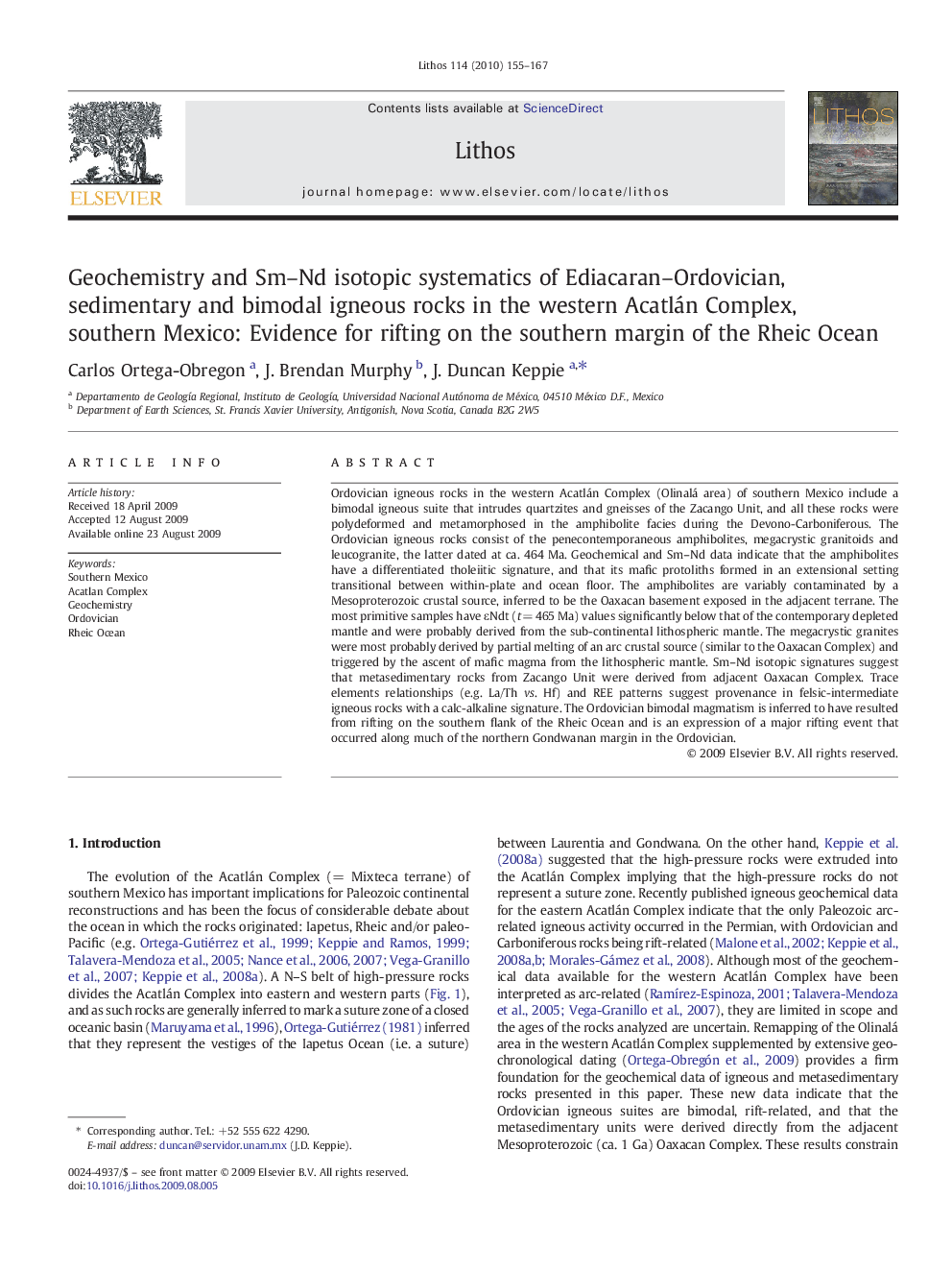| Article ID | Journal | Published Year | Pages | File Type |
|---|---|---|---|---|
| 4717310 | Lithos | 2010 | 13 Pages |
Ordovician igneous rocks in the western Acatlán Complex (Olinalá area) of southern Mexico include a bimodal igneous suite that intrudes quartzites and gneisses of the Zacango Unit, and all these rocks were polydeformed and metamorphosed in the amphibolite facies during the Devono-Carboniferous. The Ordovician igneous rocks consist of the penecontemporaneous amphibolites, megacrystic granitoids and leucogranite, the latter dated at ca. 464 Ma. Geochemical and Sm–Nd data indicate that the amphibolites have a differentiated tholeiitic signature, and that its mafic protoliths formed in an extensional setting transitional between within-plate and ocean floor. The amphibolites are variably contaminated by a Mesoproterozoic crustal source, inferred to be the Oaxacan basement exposed in the adjacent terrane. The most primitive samples have εNdt (t = 465 Ma) values significantly below that of the contemporary depleted mantle and were probably derived from the sub-continental lithospheric mantle. The megacrystic granites were most probably derived by partial melting of an arc crustal source (similar to the Oaxacan Complex) and triggered by the ascent of mafic magma from the lithospheric mantle. Sm–Nd isotopic signatures suggest that metasedimentary rocks from Zacango Unit were derived from adjacent Oaxacan Complex. Trace elements relationships (e.g. La/Th vs. Hf) and REE patterns suggest provenance in felsic-intermediate igneous rocks with a calc-alkaline signature. The Ordovician bimodal magmatism is inferred to have resulted from rifting on the southern flank of the Rheic Ocean and is an expression of a major rifting event that occurred along much of the northern Gondwanan margin in the Ordovician.
